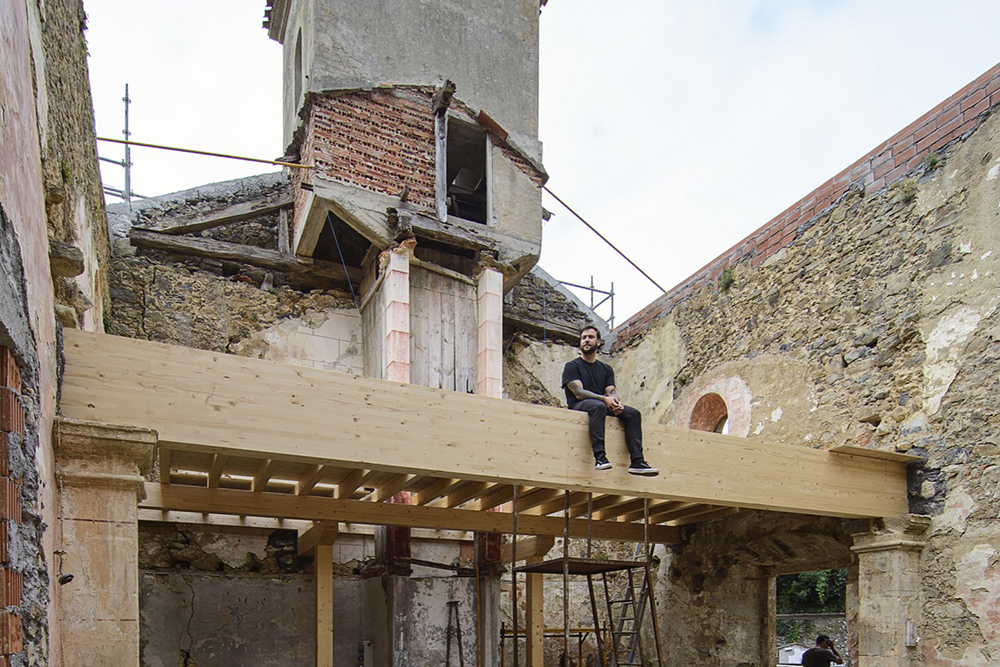Tas Careaga: ‘Living in a church like this one feels very freeing’
Three years ago, this young designer from Bilbao threw everything he had at a project that, much to his own surprise, would prove the making of his career. Not many people would contemplate transforming a sixteenth-century church into their dream home, let alone one as eminently contemporary and liveable as this one. An impulsive fantasy brought to life, this incredible restoration has featured in countless articles in Spanish and international media and was named one of the top ten restorations in the world by Dwell magazine.
But Tas is ambitious and already itching to move on to new architectural ventures. First, he will need to sell the property that he has called home for the last few years. That’s where we come in. The Singular Space, specialists in extraordinary properties, are helping Tas in his search for a new owner. In this interview, we find out how he came across the property, surrounded by the glorious landscape of the Vizcaya region, and learn some of the secrets behind its magnificent rebirth.
What’s it like living in a sixteenth-century church?
In this case, we’ve got the combination of a unique space and unspoiled nature. I decided to leave a third of the interior completely open plan and fluid, so that you’re still conscious of being in a church. The ceilings are ten metres high, and that creates an amazing sense of space... When you open the big window overlooking the valley, it feels like the mountain is right here inside the house. You might say it feels like freedom.
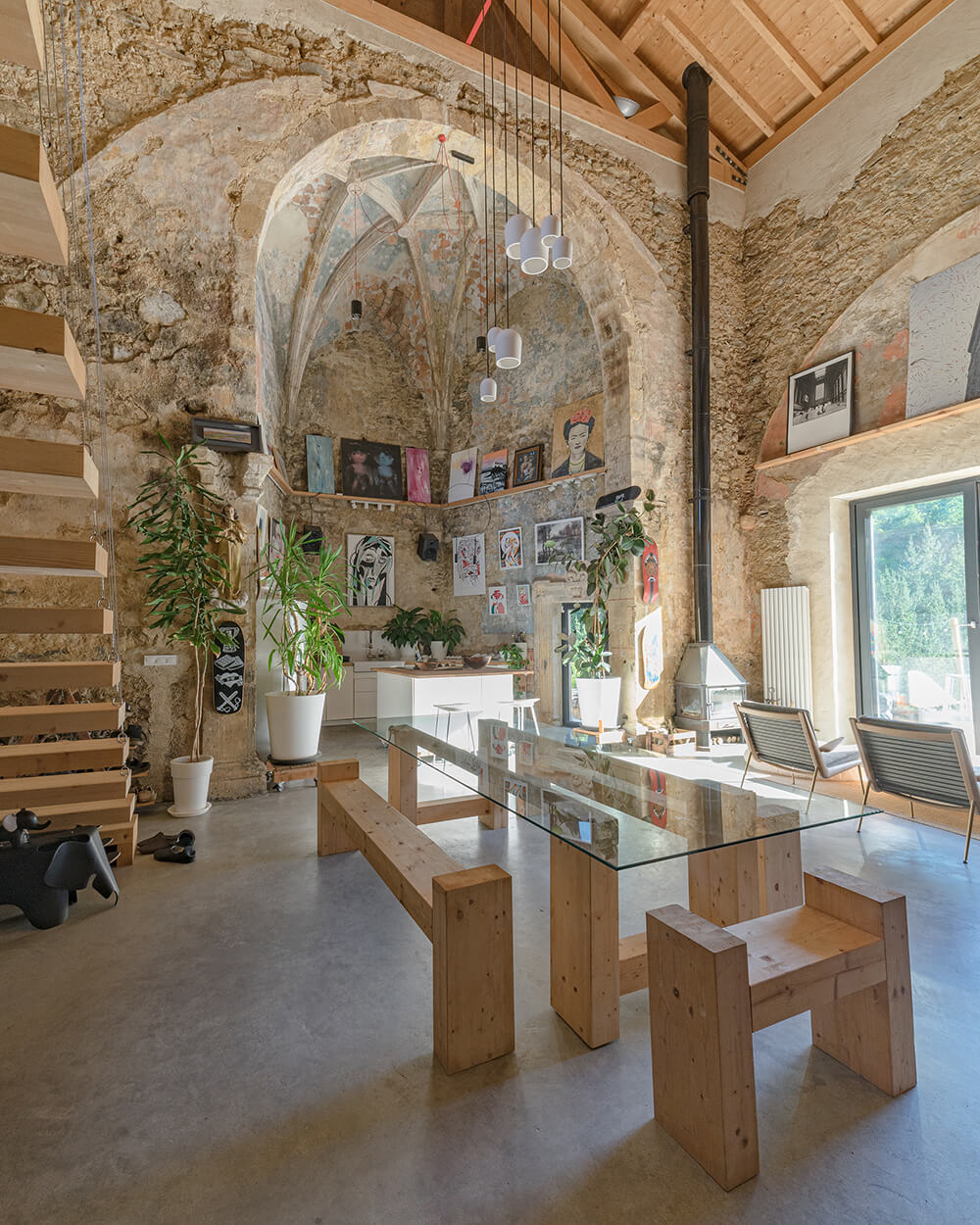
Can you tell us a bit about its history?
The church was built in 1530. In the eighteenth century, the original building was modified to extend the bell tower. It underwent various alterations over the centuries, but what you see today is the original sixteenth-century structure.
When did you buy it? What were you looking for at the time, and what kind of state was it in?
I had been looking for an unusual rural property for years, something that had the makings of a really special project that would let me think outside the box. In 2016, after hours and hours of viewings, I came across this church, in ruins, and I rolled up my sleeves and got to work.
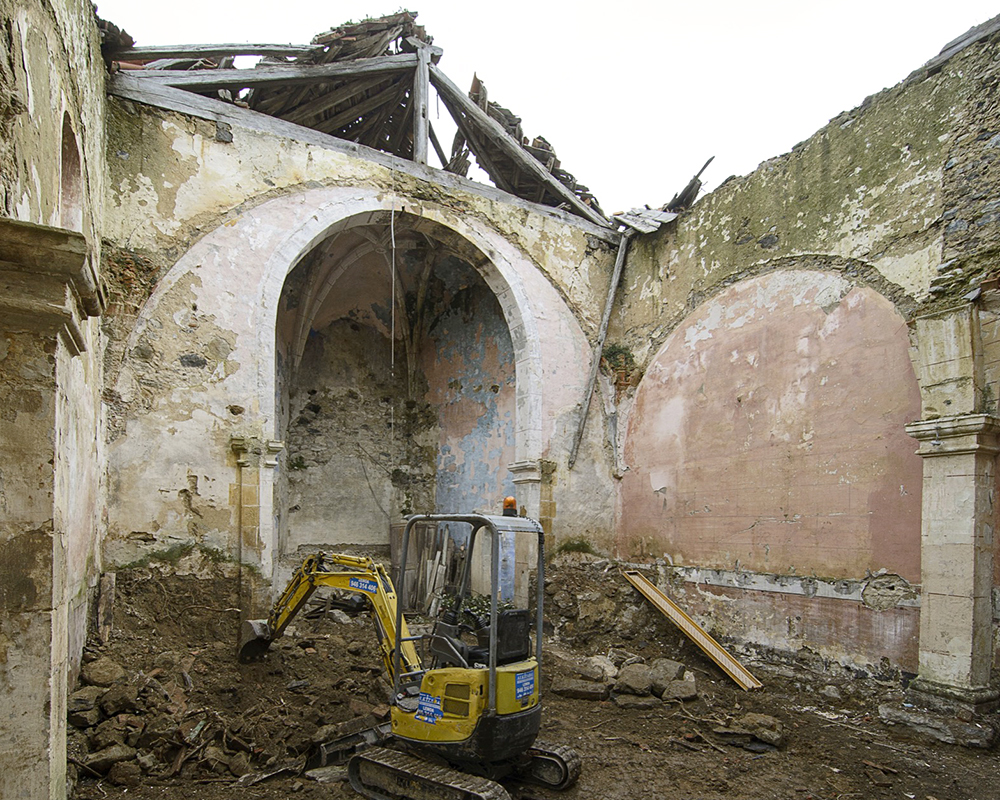
What was it that won you over?
The sheer spaciousness of it, and the setting. It’s a very rare combination and I thought I’d never find anything like it again.
Was it a complex restoration?
The project itself took three years, and it was a lot of work, a lot of paperwork and a lot of planning. Once it was basically complete, there were some ongoing improvements that were more straightforward. But those first three years were just insane.
What makes this property so special?
For me, what makes it unique is knowing that the walls around you have been standing for 500 years, and the fact that I’ve made the interior very much my own. I regard it almost like a work of art. There’s furniture that I designed and built myself and other pieces that have been in my family for generations, so it’s an incredibly personal and unique mix. It doesn’t fit into any particular style: it’s just ‘the church of Tas’.
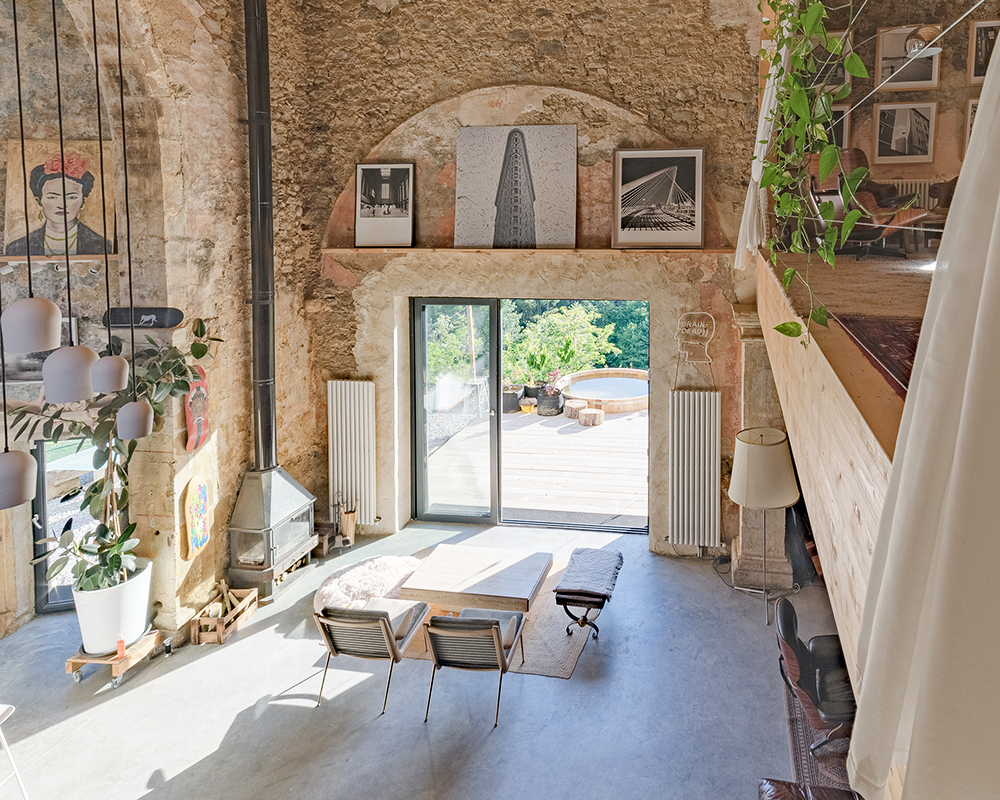
What did you do to put your own stamp on it?
The interior is 100% me. It’s got my photos, my paintings, my art collection, furniture that belonged to my family or that I made myself... so you could say that the entire project has my stamp on it.
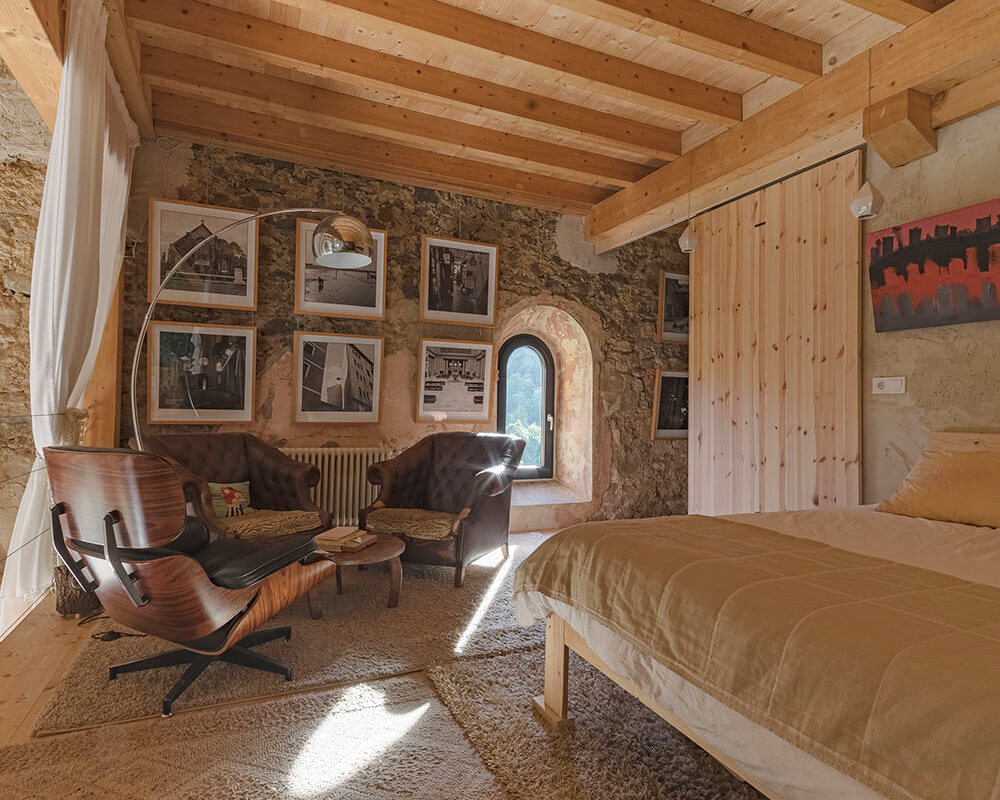
Is there any corner of the property that strikes you as particularly special?
I’d say there are three: the kitchen in the alter, the fireplace area with the church window and the space where I’ve made my studio, which could be converted into another suite.
Have you thought about using it for anything other than a home?
I’ve held the odd concert here, and a few other events. It’s such an open and flexible space, so it has a lot of potential... For my birthday, before the pandemic, I had 150 people over and we all fit very comfortably.
"For me, what makes it unique is knowing that the walls around you have been standing for 500 years, and the fact that I’ve made the interior very much my own."
Tas Careaga
Tell us about the setting.
We’re surrounded by forest... the property is part of a hamlet with about seven houses, not far from the road, and so it’s very easy to access. Even so, every aspect of the design is intended to make the most of the views over the valley, so from inside the house and from the garden all you can see is the old railway station, some 500 metres away. Everything else is river and mountain.
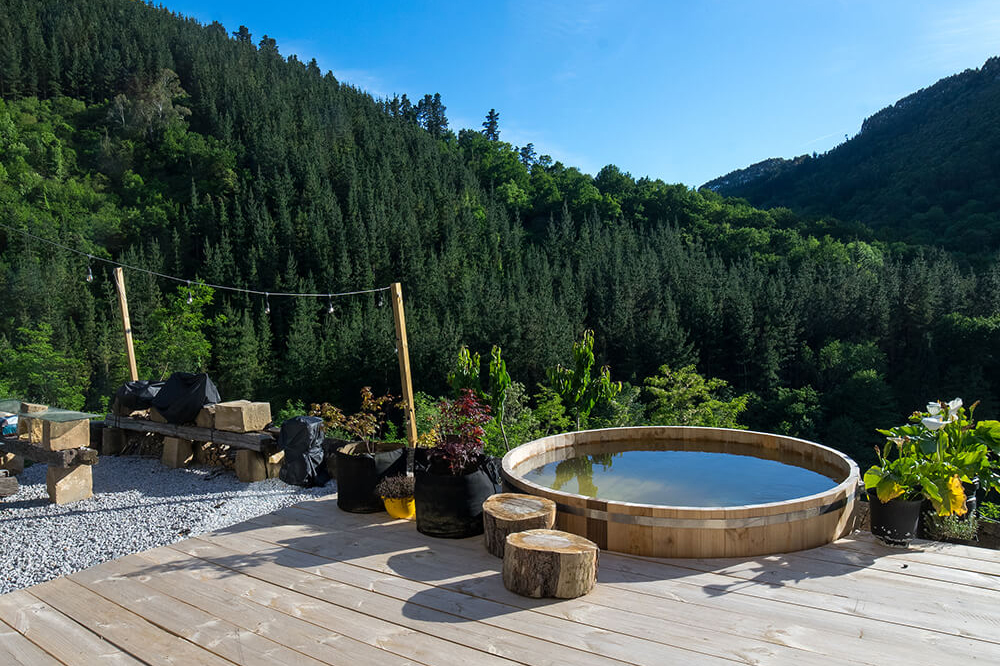
Why have you decided to sell it? Are you tempted to do it all again?
It’s the biggest project I’ve ever undertaken, and the one I’m most proud of. But I’m still young and I think it’s important to keep moving forward. At 36, it’s too early to settle down, no matter how happy I am here. Selling the house will allow me to embark on something new. At the moment, I have a few things in the works and I hope there’s a lot more to come.
